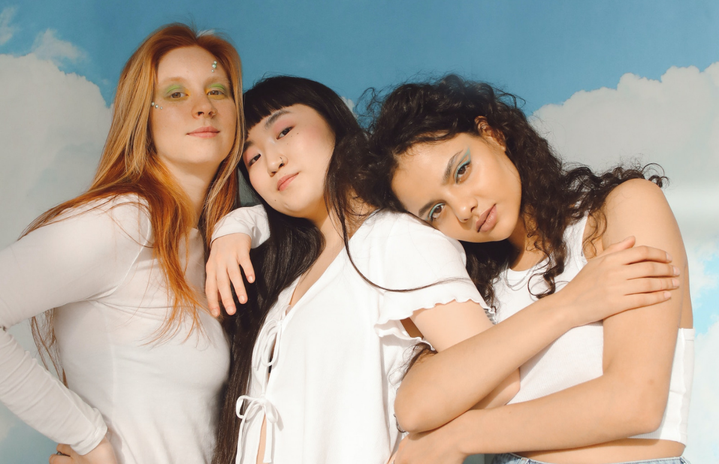Visual perception is a deeply subjective experience, profoundly influenced by cultural, societal, and personal factors. In the contemporary world, where diverse artistic expressions and perspectives coexist, this subjectivity is more evident than ever. Within this complex landscape, two significant aspects stand out: the persisting influence of the male gaze and the transformative power of social media aesthetics and how both are detrimental to female empowerment.
Visual perception is highly personal and shaped by individual viewpoints and the contexts in which it occurs. In our globalized world, where different cultural traditions and societal values intersect, how we perceive and appreciate art is a subjective process.
One crucial aspect of this subjectivity is the reevaluation of the male gaze. Artists are increasingly addressing issues of gender, identity, and the objectification of women in art. This new approach questions the traditional narratives that have dominated the art world for generations, providing alternative viewpoints and challenging conventional portrayals.
Historically, the male gaze has been a predominant influence in art, with male artists often depicting women for predominantly male audiences. These depictions frequently emphasized women’s physical attributes and sensuality, portraying them as passive objects of desire. This representation not only reflects societal norms but also serves as a powerful mechanism that reinforces gender roles and the subjugation of women.
In a contemporary context, the critique of the male gaze has become integral to the broader feminist movement. Artists, scholars, and cultural critics have continued to challenge traditional gender representations, leading to a greater emphasis on women’s perspectives in art. Such endeavors align with the broader movement to break free from the constraints of the male gaze, embracing a diversity of narratives and fostering a more inclusive and critical approach to visual culture.
Simultaneously, the rise of social media platforms has redefined our engagement with visual content. Platforms like Instagram, TikTok, and Pinterest have become influential conduits for aesthetic trends. The carefully curated profiles on these platforms invite individuals to ponder how they construct and present their images and personal narratives.
Social media aesthetics prioritize visual storytelling, self-representation, and cultural commentary. These platforms empower individuals to be both creators and consumers of images, highlighting the performative nature of visual culture in the digital age. As we craft our digital personas, we are confronted with the malleability of our understanding of art, shaped not only by cultural and societal constructs but also by the identities we cultivate in the digital realm.
For example, the aestheticization of the ‘sad girl’ as a byproduct of media representations plays a significant role in feminizing mental health within mainstream society. Rather than seeking proactive mental support, women are often encouraged to embrace and romanticize their suffering as an ethereal quality that piques the interest of the male gaze. Such adherence to antiquated gender expectations restricts modern women, preventing their personal growth and independence beyond being perceived as love interests within the broader patriarchal context. To quote the art critic John Berger, “the surveyor of [a] woman in herself is male. Thus, she turns herself into an object of vision: a sight.”
The romanticized ‘sad girl’ phenomenon is often associated with the influence of artists like Lana Del Rey, particularly through her exploration of anti-feminist themes concerning gender dynamics in relationships. Lana’s music, in songs such as “This Is What Makes Us Girls,” has been criticized for reinforcing stereotypes about teenage girls who conform to a vision of femininity marked by ribbons, pink attire, and a primary focus on pleasing men. Lyrics like “[girls] all look for heaven and we put our love first” perpetuate the idea that young women’s identities are intrinsically tied to male approval. This kind of messaging reinforces damaging stereotypes and limits women’s autonomy, encouraging them to conform to traditional gender roles. Such conformity not only restricts personal growth but also hinders the empowerment of women, reducing them to passive players in narratives dictated by societal expectations. Portrayals of gender norms in cultural texts often cast feminism, a historically
empowering ideology, as in opposition to femininity. These portrayals teach young girls that one cannot simultaneously possess a strong and independent mind while embracing their soft-hearted and nurturing qualities. As a result of the coquette aesthetics’ romanticization of docility, women can find themselves unconsciously ensnared in a realm of stagnant gender roles and potential violence.
Furthermore, the constant scrolling and rapid consumption of content challenge us to reflect on how we truly engage with the images we encounter. The influence of social media aesthetics encourages us to acknowledge that our understanding of art is shaped not only by the cultural and societal constructs but also by the digital personas we create.
In conclusion, the interplay of the male gaze and social media aesthetics within the landscape of visual culture continues to shape our understanding of art and the empowerment of women. As we navigate this intricate terrain, it is crucial to remain critical and vigilant, acknowledging that our perceptions are not fixed but influenced by a complex interplay of historical, cultural, and individual factors. By doing so, we can contribute to a more inclusive and empowered vision of visual culture in the contemporary world.


